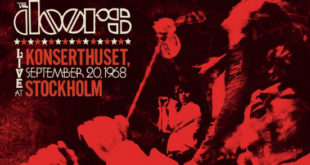National Association of Broadcasters, NPR, others dead wrong:
- Results have been released from a long anticipated engineering study ordered by Congress — a study designed to determine whether small community radio stations could cause interference to the signals of full power broadcasters. The study, conducted by an independent testing company called the MITRE Corporation, recommended the lifting of burdensome restrictions imposed by Congress in December of 2000 upon the new Low Power FM (LPFM) radio service.
In its testimony before Congress, the National Association of Broadcasters (NAB) had complained that the FM radio dial would be drowned in “an ocean of interference.” But the study authors found so little evidence of potential interference that they chose not to implement some later stages in the study — such as an economic impact study and subjective listening tests — that would only have been necessary if interference had been proven.”
“I hope that the wild goose chase for interference — and the claim that a dinky hundred watt community station can cause this kind of problem for a 20,000 watt commercial station — can finally come to a close.” said Pete Tridish, Technical Director of the Prometheus Radio Project.
….”As the result of these bizarre political pressures exerted by the broadcast lobby, the FCC has developed a more extensive complaint procedure for when you turn on a hundred watt station than when you turn on a 50,000 watt station. We proved in 1999 that the interference issue was a red herring, and MITRE has proven it again,” said Pete Tridish. “It is time to let low power radio into the cities.”
The low power radio service was launched in January 2000, but soon after was curtailed in most metropolitan areas by a debilitating Act of Congress requiring more study before most licenses could be issued. Under pressure from the large broadcasting interests, key Congressmen slipped language into an appropriations rider — language that eviscerated the FCC’s new rules in November of 2000. Under the new rules, about 75% of low power FM opportunities were eliminated, leaving only 1 new station available in the top 50 American cities. Smaller towns, further away from major metropolitan areas and their concentrations of megawattage radio stations, were less affected by the bill and allowed to build.
Over 200 Low power radio stations are on the air in small towns around the United States today, run by schools, churches, activist groups, unions and other civil society groups. If adopted by an act of Congress, MITRE’S recommendations would allow thousands of small community groups, in cities all across the US, to build these vibrant new neighborhood institutions of democratic media.
….A few key points from the MITRE study
As predicted by the FCC and myriad LPFM advocates, only small zones of interference directly around the transmitter site of the LPFM were found.
• No significant LPFM-related degradation to a full power station’s signal was ever identified at more than 333 meters from an LPFM transmitter.
• New digital radio channels and Radio Reading Services To The Blind were tested, and no significant problems were found.
• Despite public notices and a 1-800 number, there were no complaints from the public related to any low power radio test site.
• In the very worst case found, .0013 of receivers in the service area of a full power station could be affected. As the report stated, “In most cases, this fraction is orders of magnitude smaller.”
The report made a few suggestions for minor rule changes that could prevent even this tiny bit of interference, if necessary. Advocates believe that the more extensive complaint procedure already developed by the FCC is more than adequate for ferreting the out the few cases of interference that may occur — especially for Low Power Radio.
 Blogcritics The critical lens on today's culture & entertainment
Blogcritics The critical lens on today's culture & entertainment



